SEARCH






|
|
|
|


by Editor HJ Yang
Edited and published by Yvette Depaepe, the 26th of January 2024
My wife and I heard about Baffin Island when we were in Wapusk National Park near Churchill for the bear cub tour. We were told that there we would see the bear cubs playing in the icebergs. We decided to check it out. We booked with Arctic Kingdom company, which is the only company operating in that remote area. We took a 9 day tour called “Spring polar bears and icebergs Baffin Safari”.
Baffin Island (formerly Baffin Land), in the Canadian territory of Nunavut, is the largest island in Canada and the fifth-largest island in the world. Its area is 507,451 km2; the population was 13,039 according to the 2021 Canadian census; and it is located at 68°N 70°W with the capital city of Iqaluit (with a population of around 7,000). The island is named after English explorer William Baffin, who, in 1616, came across the island while trying to discover the Northwest Passage.
Baffin Island has been inhabited for over 3,000 years, first by the pre-Dorset, followed by the Dorset, and then by the Thule people, ancestors of the Inuit, who have lived on the island for the last thousand years. In about 986, Erik Thorvaldsson, known as Erik the Red, formed three settlements near the south-western tip of Greenland. In late 985 or 986, Bjarni Herjólfsson, sailing from Iceland to Greenland, was blown off course and sighted land south-west of Greenland. Bjarni appears to be the first European to see Baffin Island, and the first European to see North America beyond Greenland.
The Saga of Erik the Red, 1880 translation into English by J. Sephton from the original Icelandic 'Eiríks saga rauða.
“They sailed away from land; then to the Vestribygd and to Bjarneyjar (the Bear Islands). Thence they sailed away from Bjarneyjar with northerly winds. They were out at sea two half-days. Then they came to land, and rowed along it in boats, and explored it, and found there flat stones, many and so great that two men might well lie on them stretched on their backs with heel to heel. Polar-foxes were there in abundance. This land they gave name to, and called it Helluland (stone-land).”
Our journey started in Ottawa International Airport on April 12, 2023 from our home in Florida and stayed overnight at a hotel near the airport. Next day, we first flied to Iqaluit, capital of Nunavut and then take another flight to Qikiqtarjuaq on April 13, 2023 and stayed at Tulugak Hotel Inns North at the end of the small town with 400 people with hot dinner.
Qikiqtarjuaq is situated above the Arctic Circle and off eastern Baffin Island. Both Davis Strait and Baffin Bay run to the east, and the Baffin Mountains are located to the west, more specifically the Arctic Cordillera mountain range. It is also one of the Nunavut communities closest to Greenland. The island is known for Arctic wildlife, bird watching at the Qaqulluit National Wildlife Area. Polar bears can be found all along the coast of Baffin Island but are most prevalent where the sea ice takes the form of pack ice, where their major food sources—ringed seals (jar seal) and bearded seals—live. Polar bears mate approximately every year, bearing one to three cubs around March. Female polar bears may travel 10–20 km inland to find a large snow bank where they dig a den in which to spend the winter and later give birth.
From our hotel we could see the iceberg in the frozen bay
On Day 3, after breakfast, we left the town and travel to our camp site by snowmobile and qamutik (traditional Inuit sled, made mainly by wood with some metal sheet). We had seven guests, one young man from Australia, a professional film-maker, a couple from Switzerland, another couple from France and two of us from Florida. We had two trackers on snowmobiles, both Intuit native and five guides, one from New Zealand, one from Churchill, Canada and three local Intuit natives. We also brought with us a dog.
We rode on five qamutiks, three for three couples, one for the film-maker with his heavy equipment and one for supply with lunch.
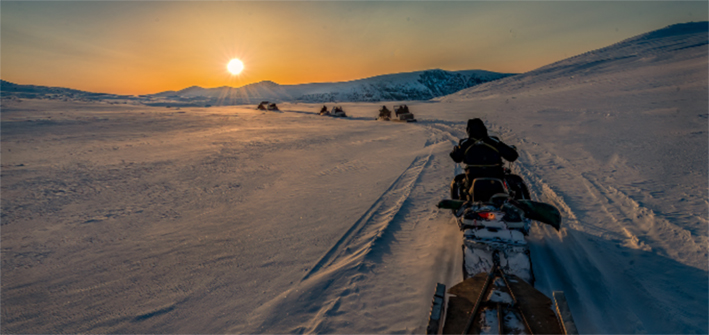
We saw stunningly vast landscapes and panoramic views of soaring icebergs and mountains in the Arctic. On the way, we checked out a few ice caves. After more than four hours, we arrived the camp site.
The our camp sat on approximately 25 meters (8 feet) of solid ice (or more) with living tents on both sides, two bathroom tents in the middle between two rows of living tents and a common tent for dining as well as kitchen tent at the end. All tents were heated by gas. Living tents were very comfortable.
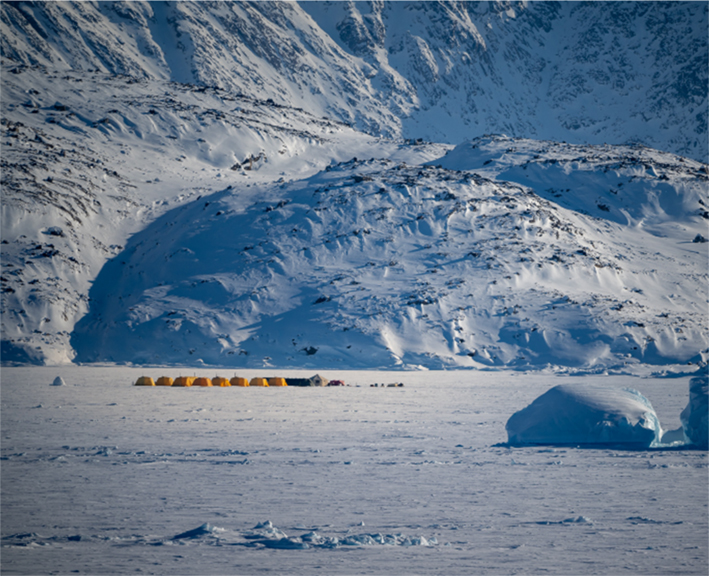
First night it was too hot we had to open the window to let hot air out. The food were great with two chefs at the camp. Two young chefs are a newly wed couple, man from England and the girl from Canada, Vietnam decent. They met at a culinary school in Toronto two years ago. They made delicious food every day with different style and flavour, from traditional English to Thai. We had hot chocolate and hot tea whenever we were at the camp. Every day, we brought lunch with hot soup with us so we did not need go back to the camp. On camp, they also made a fishing hole for fishing.
Every day, we would leave early and look for the bears. We also had two trackers on the snowmobiles looking for bears on the vast area. One tracker ware the polar bear skin pant. Weather sometime were very cold from -10 to -30 degree. We were all exposed sitting in qamutik. We would come back to camp just before dark after sunset. For first two days, we only saw some mom bear with cub from distance. Once we closed in they ran away fast. On Day 5, we luckily saw a mom bear with her cub from distance. We closed in and they stayed in the iceberg fields. However, they did play a lot of time, but did not move at all as we were waiting for any moving action.
On Day 6, we saw a mom bear with a cub, climbing up a big island from the bottom fast and disappeared soon.
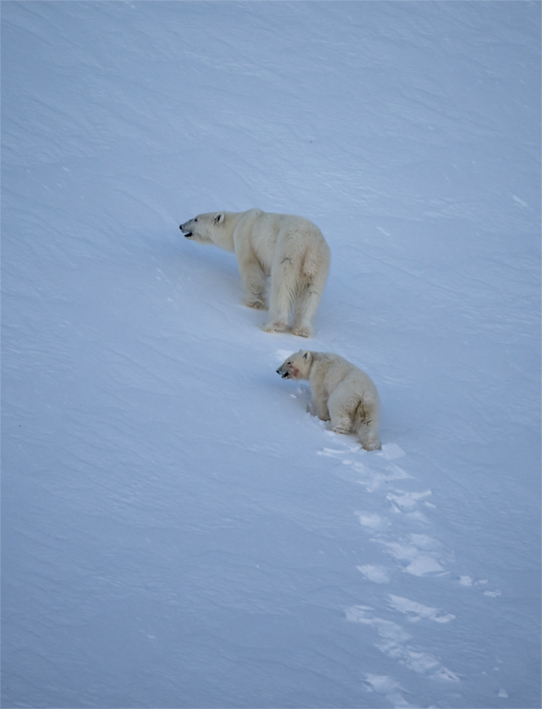
Our main breaking came on Day 7 of the trip, our trackers found a mom bear with two cubs, not far from our camp site. We followed them in the morning as the family rest on a small iceberg and then they moved away. After lunch, we found them again on the top of a huge iceberg, playing and feeding with even bigger iceberg behind. We observed them for two hours from a safe distance. They then slowly moved down from the top iceberg to the bottom as we followed them. However, the mom suddenly decided to move to our direction followed by two cubs. It was too close to comfort and we were sacred and had to quickly retreat back. Our guide had to make big noise by batting the metal cup to stop them advance further. They came to us within 50 meters. Fortunately they turned back after hearing the batting noise by our guides. Our guides had long gun rifles, with bullet for making crack noise and real one for killing. Our guides told us that they never need to use them in their guide life, even the bullet for crack noise. Our encounter was their closest to the bears during the tour.

Next day after breakfast, we left the camp and back to the town. We all thought that on the way out to the town we should be able to see bears again. We saw a lot of bear tracks, but no bear. We got into our hotel before dinner. We all took the first hot shower since there were no shower on camp. We left next day to Ottawa and concluded our wonderful tour.
I was impressed by our Intuit native guides, who look remarkably like any one from south-east Asian town or city. Our guides told me that most people here are relied on the government to support their daily lives from school to fuel. During winter time, only way out of town is by air plane and during summer, ship comes to supply big item needs for local people.
Most men work on tourist and trapping in the winter and on fishing in summer. They make most of money in summer months. However, they look relaxed and happy and are able to endure any harsh conditions the nature brings to them. Each year, Canadian government allows around 600 or 3% its polar bears to be trapped and killed by under a limited hunt, mostly by native Inuit hunters. Quotas are established for each management unit designed to keep harvests at levels the bear population can sustain.
This town usually will be allocated one or two each year. We saw a polar skin, hang out for dry outside of one house.
I wonder what these people are looking for in their life in such a harsh environment condition. Why do they want to live in such a place? Then why do I attract to these places? Do I really look for polar bears, or escape from the reality or find myself? Or being slave of your passion, as Greeks put it. I just do not know. All I do know is that I have to come to such a place and feel completely comfortable, relaxed and at home there while taking photos with my full attention. In such a place, life becomes simple and normal. I am longing for such a simple and normal life, just like when I was a child, cutting grass for feeding animals.
When I was sleeping in the tent at night during the tour, I often was thinking where the polar bears could be this time, what they were doing and what they were thinking? “I think, therefore, I am” (cogito ergo sum). Do these polar bears think?Do they know that they are kings in Arctic? What are they living for in such a vast wildness place? Obviously they enjoy their life and go wherever they want to go and do whatever they want to do. They take whatever the life gives to them. Why cannot we do that? Why do we need to fight for wars by killing each other today since we human do not lack any food or stuff for ourselves? Why do we need to take over the place wildlife live there for thousands and thousands years? Do we really need so much stuff and so large place for us to live? Or we just greedy. We shall live harmony with nature. What would happen if all human become polar bears or any wildlife in this planet? For one thing there will be no wars since they do no have weapons as human do today. So there will be no war or genocide. Really who we are and what do we live for in our life? I do not think I have a better answer than yesterday. Do you have a better one today? If anything, at least we do need to protect our planet by preserving these polar bears and wildlife as well as their environment. So our next generations could still enjoy them. Today, the polar ice the polar bears depend on for living are shrinking due to climate change. Living in harmony with nature means that we shall conserve the nature as much as possible.
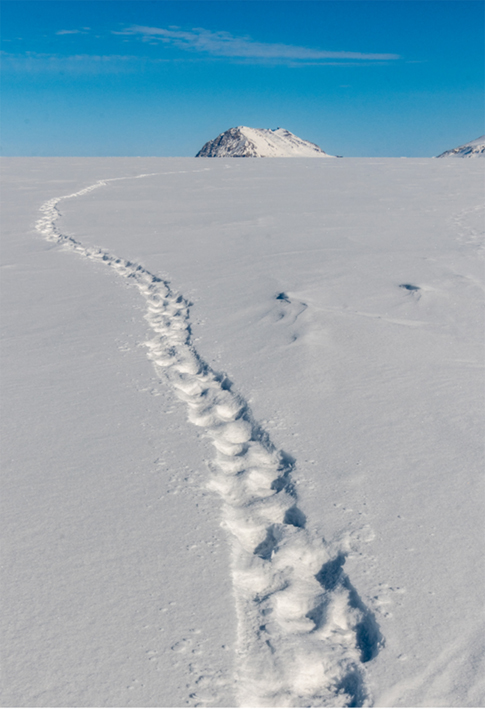

 | Write |
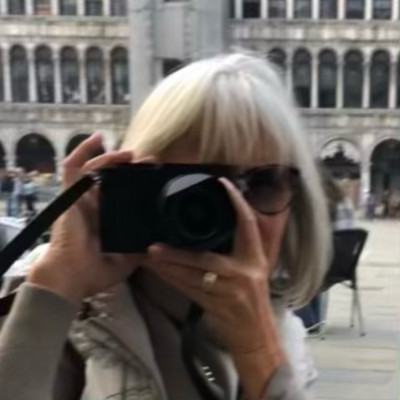 | VéroniqueS PRO thanks for sharing your travel book, beautiful pictures and interesting texts on the life in the far north |
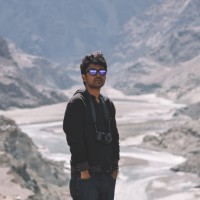 | Harsa Mitra PRO great storytelling and imagery! |
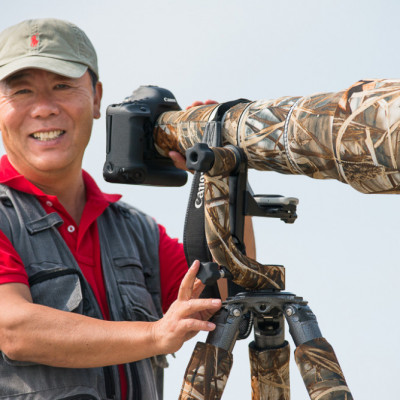 | Phillip Chang CREW Nice image and very interesting story! |
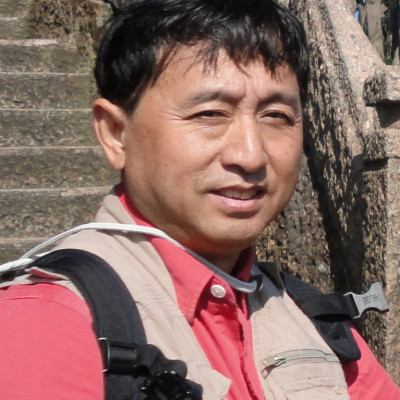 | Jun Zuo PRO Great story and nice photo works. Thanks for sharing. |
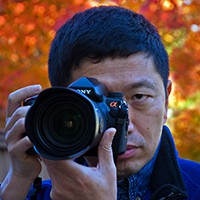 | John Fan CREW Great article! Thanks for sharing! |
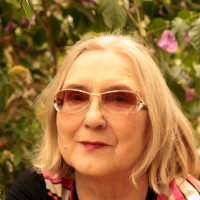 | UstinaGreen PRO Great adventure and amazing images! I like your
Wonderful description of the polar bears! Many,
Many thanks and best compliments!! |
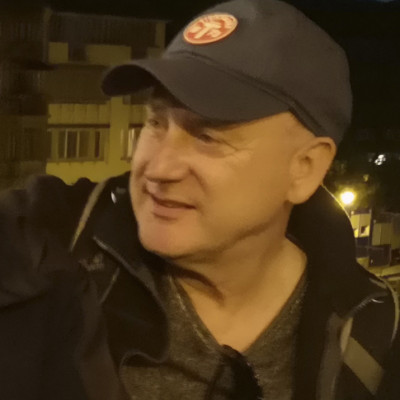 | Norbert Maier PRO Stunning!! |
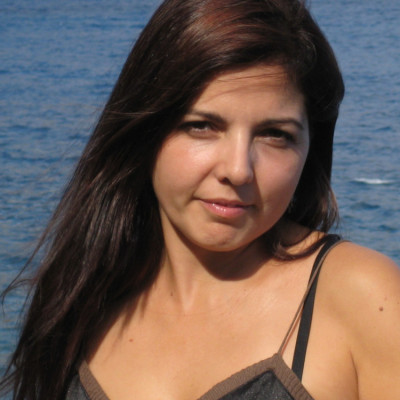 | Piera Polo PRO I love to read the story and your thoghts during your stay in this artic camp, what a great adventure! I would like to see one day in my life also the polar bears in their enviroment and like you, I hope the nature will be preserved for the future generations. Love when you told about that if the Earth would be lived only by animals, there wouldn't exist wars or genocides, only indeed life for survive! Amazing every image of the white bears and their cubs, many thanks to share it! |
 | Colin Dixon CREW Stunning images of these wonderful animals. The description of your time there makes us all want to experience something like this in our lives thank you for sharing :) |
 | Pang Teng Lin PRO Stunning capture. Thank you for sharing . A detailed description of the journey. |
 | Douglas Neese Truly stunning! Thank you so very much for sharing. |
 | Zhaonian Zhou PRO 非常感谢分享精彩的作品和行程长细的介绍 |
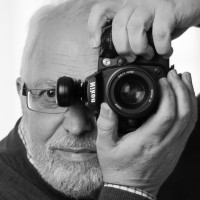 | Eduardo Blanco García PRO Magnífico reportaje. Mis felicitaciones. |
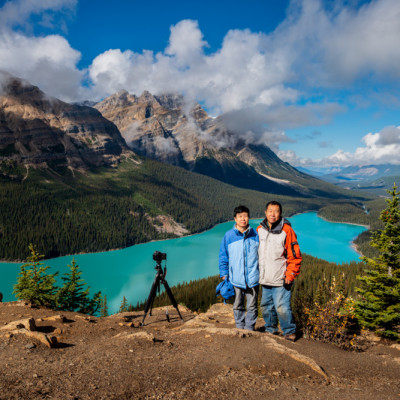 | Wanghan Li PRO Appreciate very much your wonderful article and the amazing and striking works about polar bears with cubs and the arctic landscape. The details information of the trip is valuable! Thanks a lot! |